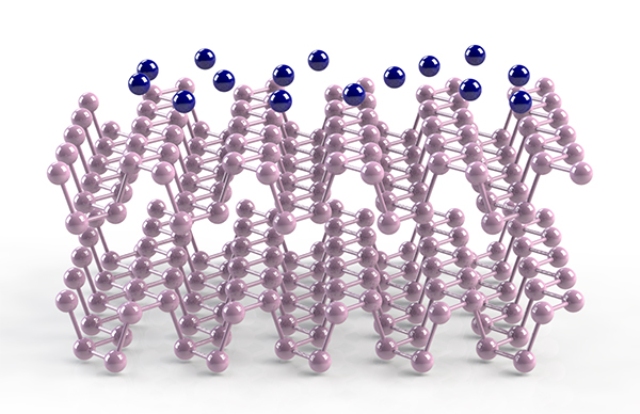Researchers have tuned the band gap of black phosphorus (BP) to create a superior conductor that may be mass produced for application in solar panels, telecommunication lasers, and other such electronic and optoelectronic devices.
 Phosphorene – The natural successor to Graphene?
Phosphorene – The natural successor to Graphene?
The researchers are from the Pohang University of Science and Technology (POSTECH), an affiliate of the Institute for Basic Science’s (IBS) Center for Artificial Low Dimensional Electronic Systems (CALDES).
In order to appreciate the findings of this study, it is important to ascertain the nature of two-dimensional (2D) materials. Graphene is considered to be a wonder material. Research on graphene has won the Nobel Prize for two British scientists. This material takes the form of an extremely thin sheet of carbon that is composed of layered carbon atoms with a honeycomb structure.
Graphene has many extraordinary attributes. It is a better conductor than copper, and is more flexible than rubber. Though it is many times lighter than steel, graphene is stronger. Additionally, when a graphene layer is free of defects, it becomes impermeable to all molecules and atoms. This property makes this material promising for scientific developments in aerospace, sports, electronics, and other such applications.
The electrical conductivity of a material is determined by its band gap. Consider one river crossing that has large gaps between the stepping-stones, and another river crossing whose stepping-stones are tightly-packed. It would be easier to traverse the river with tightly-packed stepping-stones than the other one. In a similar manner, a smaller band gap enables a stronger current, as well as a more efficient current movement.
When graphene is in its natural state it has zero band gap, meaning it functions like a conductor. This conductivity takes place even at low temperatures, and cannot be 'shut off'. This prevents graphene from being used as a semiconductor.
Phosphorus has atomic number 15, and gives its name a whole class of compounds. White phosphorus in a stable form is known as Black phosphorus (BP). BP can be cheaply produced on a large scale. However, unlike graphene, BP has a natural band gap. This enables BP to switch on or switch off its electrical current. The researchers conducted tests on a few layers of phosphorene, a phosphorus allotrope.
Keun Su Kim, a professor at POSTECH, said “We transferred electrons from the dopant - potassium - to the surface of the black phosphorus, which confined the electrons and allowed us to manipulate this state. Potassium produces a strong electrical field which is what we required to tune the size of the band gap.”
The transfer of electrons is called 'doping', and this process induces a huge Stark effect. The band gap gets tuned, and the conductive and valence bands come together closer, which leads to reduction in the band gap from an intrinsic value of 0.35 eV to a value between 0.0 ~ 0.6 eV. Professor Kim explained, “Graphene is a Dirac semimetal. It’s more efficient in its natural state than black phosphorus but it’s difficult to open its band gap; therefore we tuned BP’s band gap to resemble the natural state of graphene, a unique state of matter that is different from conventional semiconductors.”
The new enhanced form of black phosphorus holds promise for various applications. Electrical engineers would be able to make devices with the desired behavior by adjusting the band gap.